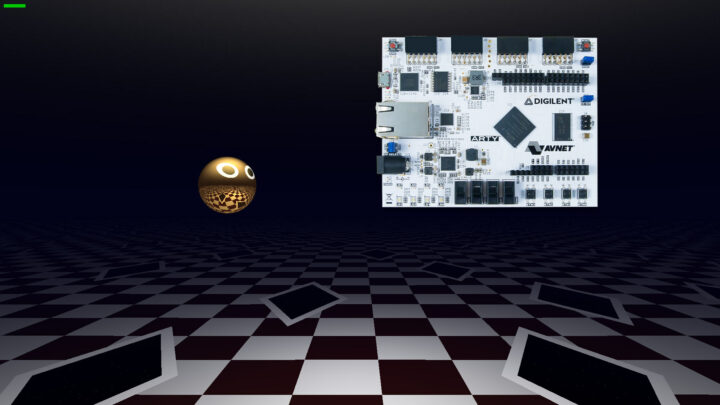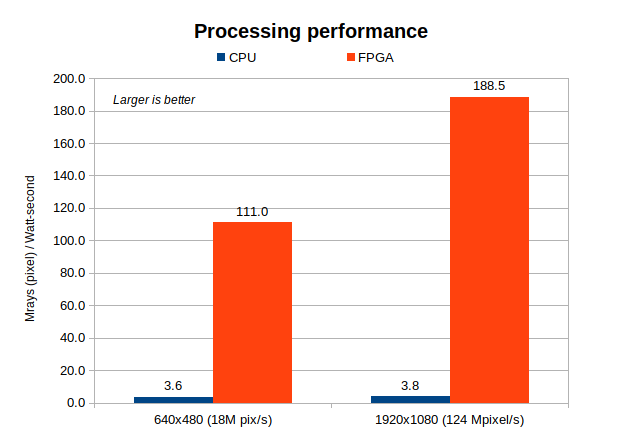Sphery vs. shapes is an open-source 3D raytraced game written in C and translated into FPGA bitstream that runs 50 times more efficiently on FPGA hardware than on an AMD Ryzen processor.
Verilog and VHDL languages typically used on FPGA are not well-suited to game development or other complex applications, so instead, Victor Suarez Rovere and Julian Kemmerer relied on Julian’s “PipelineC” C-like hardware description language (HDL) and Victor’s CflexHDL tool that include parser/generator and math types library in order to run the same code on PC with a standard compile, and on FPGA through a custom C to VHDL translator.
More details about the game development and results are provided in a white paper.
Some math functions were needed, including: floating point addition, subtraction, multiplication, division, reciprocals, square root, inverse square roots, vector dot products, vector normalization, etc. Fixed point counterparts were also used for performance reasons and to make the design easier to fit in the target FPGA, with the corresponding conversions to and from other types (integer and floats).
They compiled the game twice, once to run it on a 7nm Ryzen 4900H 8-core/16 threads processor @ up to 4.4GHz (45W TDP) running Linux, and the other time optimized to run on FPGA hardware, namely Digilent Arty A7-100T board, with a 101k LUT FPGA (Xilinx Artix-7 XC7A100TCSG324-1).
Both platforms could run the game smoothly and the FPGA solution could render the game at 60 fps at 1920×1080 resolution, but the main difference was the power consumption with the FPGA board consuming only 660 mW, while the PC was drawing 35W. Note that, as I understand it, the game does not use the GPU in the Ryzen CPU at all, but SIMD instructions were used to speed up the game. A similar game relying on the GPU for 3D graphics acceleration might consume less, but still significantly more than the FPGA board. On the other hand, the FPGA used was fabricated on a 28nm process, and up to 6 times efficiency gains could be expected on an FPGA built on the same 7nm process as the Ryzen CPU.
You can watch the video below for an explanation of the design and demo of the Sphery vs. shapes 3D raytracing game simulated on the CPU and on the Arty-7 FPGA board.
You’ll find more details on the PipelineC-Graphics GitHub repository. While the graphics demo is pretty cool, the white paper further also explains that PipelineC could also be used for other projects or products with hard real-time and/or low power requirements. Those include aerospace applications where power and weight come at a premium, industrial control systems requiring high reliability and real-time processing, lighter virtual/augmented reality headset, packet filtering in networking applications, and security & cryptographic applications.
In the future, examples for all the above-referenced applications will be implemented together with a RISC-V CPU and simulator. They also plan to design an ASIC with open source silicon IP and open source tools and do a tape out.

Jean-Luc started CNX Software in 2010 as a part-time endeavor, before quitting his job as a software engineering manager, and starting to write daily news, and reviews full time later in 2011.
Support CNX Software! Donate via cryptocurrencies, become a Patron on Patreon, or purchase goods on Amazon or Aliexpress






